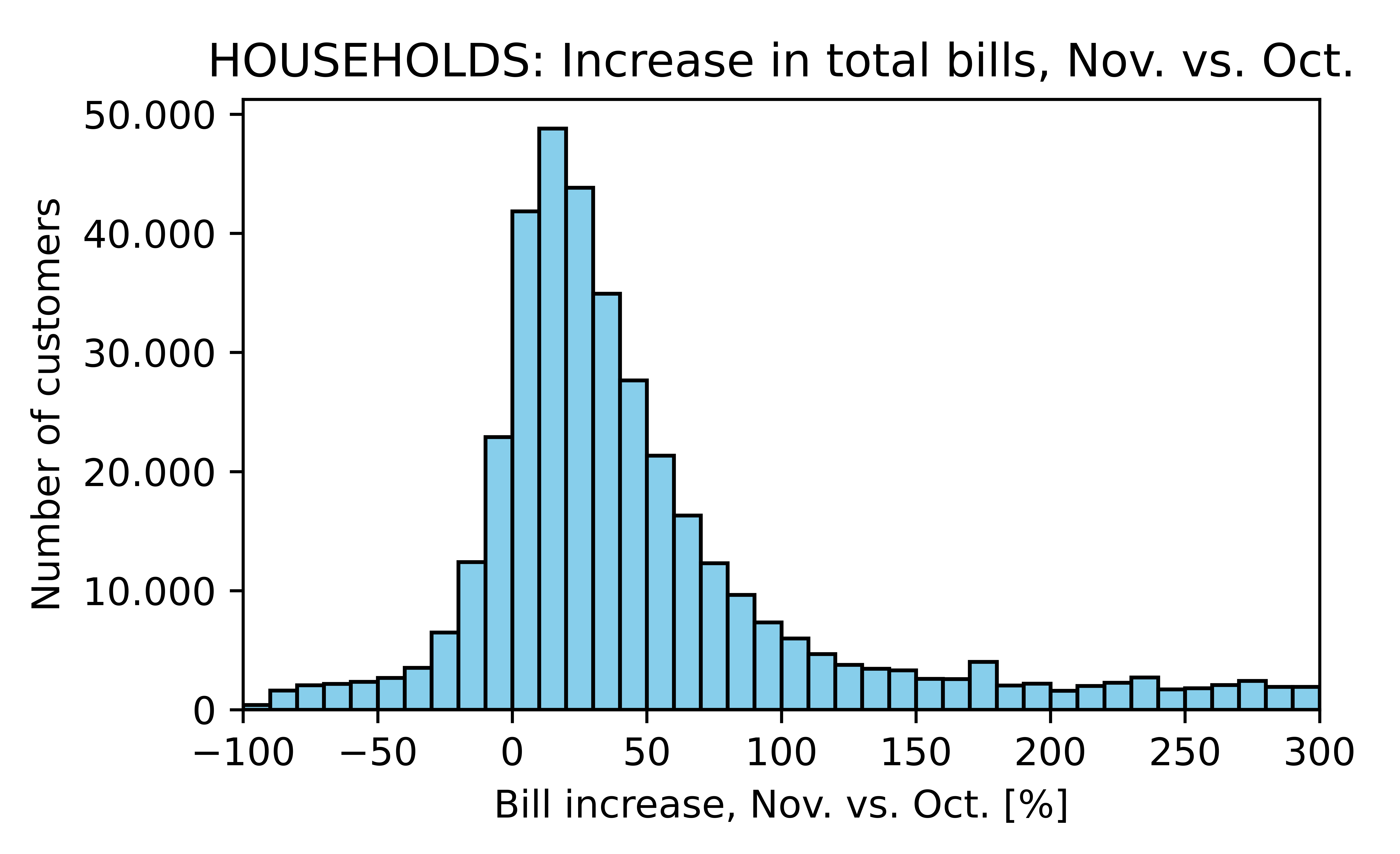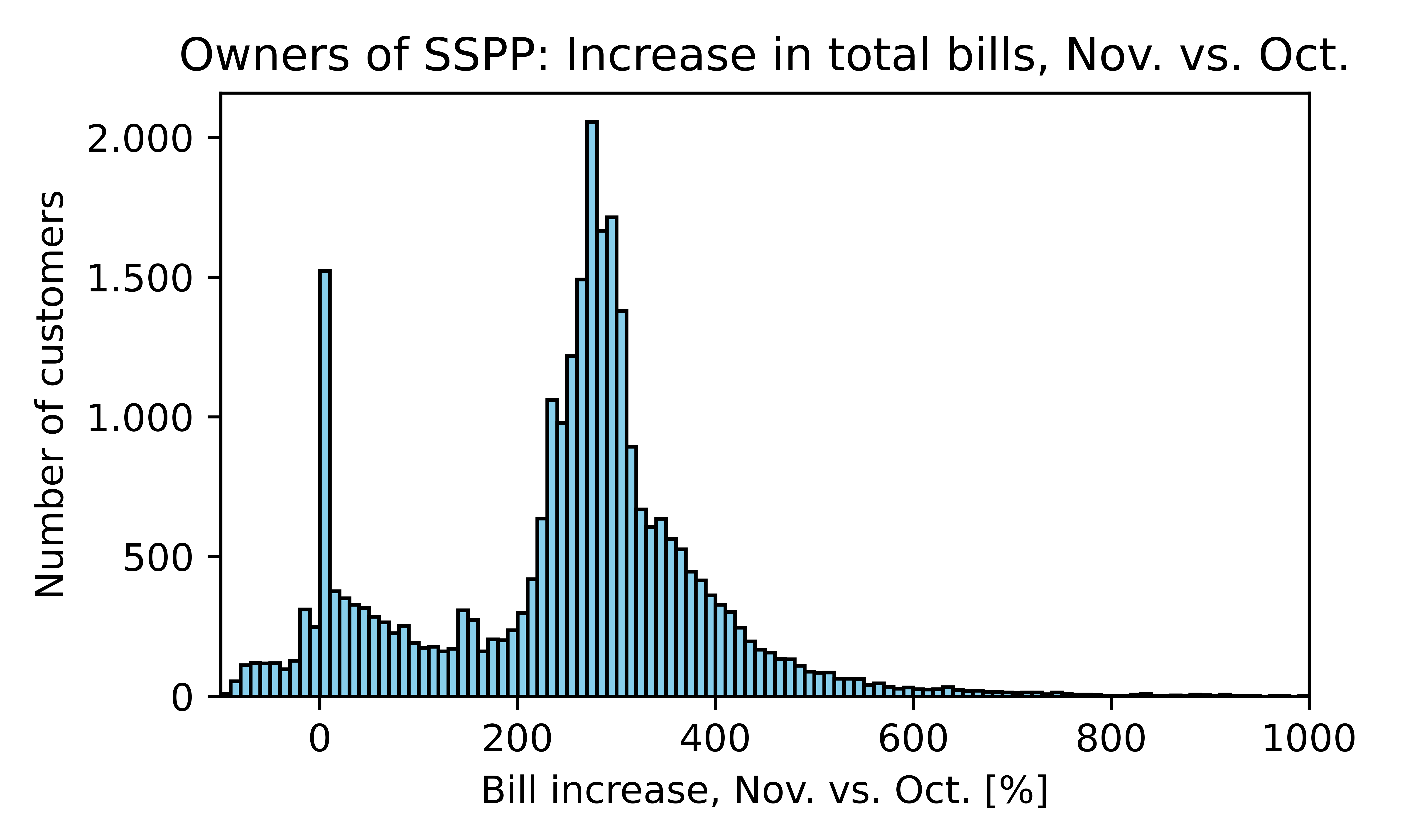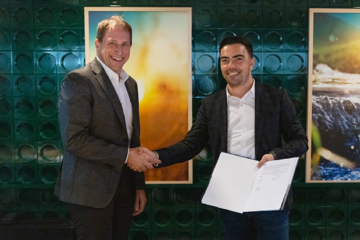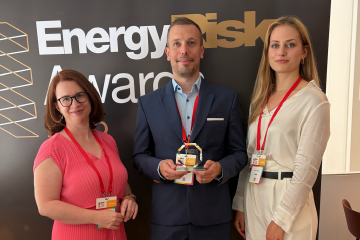GEN-I’s efforts to change the way the network charge is calculated
The Slovenian public have, in recent months, received a great deal of contradictory and often even misleading information regarding the new Act on the Methodology for Calculating the Network Charges for electricity operators (hereinafter: act), a piece of legislation that led to large numbers of customers seeing a large increase in their electricity bills for November and December. Customers can also expect equally high bills in January and February as those months fall under the (more expensive) high season under the new act.
GEN-I would like to distance itself completely from any populistic or malicious insinuations in relation to its reservations regarding the new act. We can assure you that everything we have done to oppose the introduction of the act has been focused solely and at every turn on protecting our customers. To avert any misunderstanding on the part of our customers, who have entrusted their electricity supply to GEN-I, we would like to reiterate that the introduction of the new tariff methodology is entirely the responsibility of the Energy Agency. As a supplier, we have no influence on the way the charge is calculated. In the network charge section of the monthly bills sent to its customers, GEN-I is merely the mediator of the information that we receive from the electricity distribution network. Moreover, we are not the final recipient of the proceeds of the network charge, as these are earmarked for the transmission and distribution network operator.
GEN-I has been raising this issue since 2022
With consistent respect for its independence, we have, on a number of occasions and in the course of professional and respectful dialogue, warned the Energy Agency that the new tariff methodology is unintelligible and insufficiently transparent, and suggested some improvements.
Every second electricity customer in Slovenia has chosen the GEN-I Group as its energy supplier. Together with the Section for Electricity Supplier Issues at the Energy Chamber of Slovenia (SVDEE) and a number of other entities, and with the sole aim of protecting the interests of all our customers, we drew the Energy Agency’s attention to the shortcomings of the proposed new tariff methodology in remarks given during the public consultation for the new act in 2022.1 We followed this up by making further suggestions for improvements in 2023.2 Eminent experts and other members of the profession also came to similar conclusions and raised similar questions that highlighted the need for further analyses and for more time to be taken prior to the introduction of substantive changes.3
On 19 October 2023, GEN-I sent a letter to the Energy Agency and the Ministry of the Environment, Climate and Energy with an extensive, 27-page analysis, drawn up by the company, titled ‘Proposal to adjust the new methodology for calculating the network charge and tariff systems, and the creation of a sustainable self-supply model for the purpose of efficient and flexible use of electricity networks through the introduction of green technologies, new business models and active consumption’. Our analyses were based on our customers’ knowledge, since we are in daily contact with them. This document shows that we were already responding to the situation back in autumn 2023, since our own findings suggested that the draft tariff methodology did not include the necessary expert reasoning, did not enable the market to operate as it should and impeded the processes required to decarbonise society.
We subsequently sent the Energy Agency several letters setting out our substantive concerns regarding the changes being envisaged by the Agency itself, and called for a more considered reflection leading to the establishment of a more suitable new network charge calculation system that would be as intelligible and comprehensive as possible, and would take account of all the key principles that accompanied its creation. The large number and span of network charge time blocks and their lack of alignment with the market signals in specific time periods is not only leading to confusion on the part of customers, but also and at the same time preventing changes in the established habits of usage of electrical devices from taking place – changes that would lead to reductions in customers’ total electricity supply, transmission and distribution bill and, at the same time, relieve the strain on the network. The pre-agreed billing power and the system of penalties for exceeding it place unnecessary burdens on customers – in fact, exactly the same effect can be achieved simply by taking metered measurements. Our calls have been aimed at removing the substantive shortcomings we have highlighted regarding the new calculation mechanism and drawing attention to the urgent requirement to delay the implementation of the new network charge act for a longer period to enable further in-depth reflection on the adequacy of the solutions that the act proposes.
When the tariff items for specific time blocks became publicly known, we embarked on an analysis of the financial impact of the amendments to the act. On the basis of the calculations we made, we drew attention to the negative effect that the new network tariff regime would have on various customer segments. An analysis of the bills issued in November and December confirmed that all our warnings had been correct, as bills on average rose by several tens of per cent.
Unfortunately, while the Energy Agency publicly confirmed that they had received our concerns in writing, they at no point took them into consideration. This has been to the detriment of our customers.
Amid the heated discussions that have taken place around the consequences of the introduction of this new methodology for calculating the network charge, malicious suggestions have recently been aired in public to the effect that GEN-I’s efforts to amend the act are primarily aimed at protecting the owners of small self-supply solar power plants, or even that the company’s efforts in this direction stem from its determination to preserve the GEN-I Group’s business model. While the investments made by owners of small solar power plants are making an important contribution to the transition to a carbon-free future in Slovenia, the more than 10,000 small plants that GEN-I have so far set up account for a very small share of the company’s total customer base. As Slovenia’s biggest electricity supplier, the GEN-I Group are defending the interests of all their customers, who number almost 400,000 in total. We cannot agree with the division and stratification of the population that the network charge act has caused, nor with the adverse impact this substantively inadequate piece of legislation will have on efforts to achieve the objectives of the green transition.
We present below a series of detailed analyses of the concrete effect that the new network tariff regime will have on our customers’ energy bills.
Network charge increased the average household’s November bill by almost 30%
GEN-I saw increased charges in a large number of customers’ electricity bills for November. As the government’s decree on price regulation for households and owners of small solar power plants meant the ‘electricity price’ item was lower, the increased total amount in those bills can be entirely attributed to the new tariff methodology introduced by the Energy Agency. As we have already pointed out, GEN-I, as an electricity supplier, has nothing to do with the amount levied in the form of the network charge.
Effect on the total bill
The monthly total is, of course, the most important item on the bill for customers. An analysis of the GEN-I Group’s entire portfolio of household customers, which incorporates almost 390,000 metering points, shows that the network charge, calculated on the basis of the new tariff methodology, has increased the bills of our average household customer by 39.4%. As consumption was higher in November than October, the increase in the quantity of electricity consumed led to an additional 3.2% rise on the bill, while the reduction in the electricity price as a result of government price regulation lowered the average bill by 19%. Therefore, taking the new higher seasonal network charge tariff into account,4 the average November bill was 23.7% higher than the October bill. Without the government regulation that lowered the price of electricity for customers, the bills for November would have been, on average, 42.9% higher than those for October.

Chart: Increase in the total bills of household customers for November 2024 in comparison with October 2024. .
For owners of small solar power plants, the percentage increases in the monthly totals were even higher. The increased network charge was the sole reason for the higher bills that customers received for November. In the case of owners of small solar power plants, their total monthly bill went up by as much as 270.7%.

Chart: Increase in the total bills of owners of small solar power plants for November 2024 in comparison with October 2024.
Disproportionately high agreed billing capacity fee for Time Block 1
At GEN-I we are receiving a large number of questions from customers asking why their monthly electricity bills have risen so much. One of the most frequent questions relates to a lack of clarity regarding the significant impact on their bills from a disproportionately high price for power tariff item for the time block 1, which currently stands at EUR 3.61 + VAT for every kW of pre-agreed billing power. In October, Time Block 2 was the most expensive at EUR 0.8824/kW + VAT. Under the old system, billing capacity came to EUR 0.796/kW + VAT. For precisely this reason, the fee charged for billing capacity in the bill for November was 4.3 times higher than the October amount. The same can be expected in the next three months, as Time Block 1 applies from the beginning of November to the end of February. Many customers therefore cannot understand why billing capacity is charged in time blocks at a fixed rate that is independent of their electricity consumption – that is, the cost is the same regardless of the savings in consumption that they may be trying to make, or even regardless of whether their home was empty over the last month and no electricity was used.
We will continue to stick up for our customers
Despite the fact that our reasoned suggestions have fallen on deaf ears at the Energy Agency, here at GEN-I we will continue with efforts to improve our customers’ situation. As mentioned in the press release we published with other suppliers and the Section for Electricity Supplier Issues at the Energy Chamber of Slovenia (SVDEE) on 10 January 2025, we believe that the direction of the changes we have proposed, which were also put forward by ELES, d.o.o. in its analysis (which also included a proposal to simplify the system), would bring greater transparency and allow for a simpler, fairer and more comprehensible model for calculating the network charge for final customer. In addition to a more intelligible methodology, more adequately defined tariff items of the new network charge will also be key to the future development of the network, and to the promotion of green transition solutions and the competitiveness of Slovenian industry.
Links to documents:
1 Available at: link.
2 For comparison purposes: Position of GEN-I, d.o.o. – The Slovenian electricity system faces tectonic changes: Proposal to adjust the new methodology for calculating the network charge and tariff systems, and the creation of a sustainable self-supply model for the purpose of efficient and flexible use of electricity networks through the introduction of green technologies, new business models and active consumption, October 2023.
3 For comparison purposes: Miloš Pantoš and Lucija Lukas, Prilagajanje odjema električne energije novemu sistemu za obračunavanje omrežnine (Adjusting electricity consumption to the new network charge calculation system). Elektrotehniški vestnik, Volume 90, No 4 (2023). Available at: https://www.dlib.si/details/URN:NBN:SI:doc-0DTKXRFN.
4 In addition to time blocks within the day, the new network charge act introduces differential charging for use of the network, in the form of a high season (November–February) and low season (March–October).



